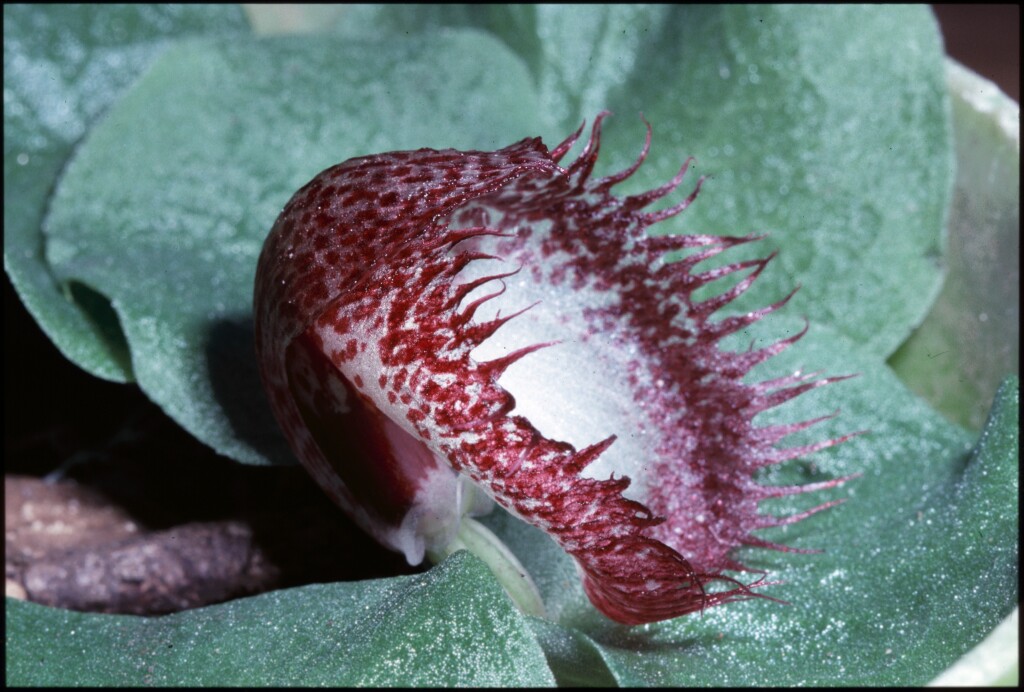Corybas hispidus
D.L.Jones Bristly Helmet-orchidLeaf broadly ovate to circular, sometimes shallowly 3–5-lobed, apex mucronate, base cordate, 15–25 mm long and wide, green both sides. Flower reddish-purple, virtually sessile; dorsal sepal greenish-grey with dark purple spots, broadly oblong-obovate, hooded over labellum, much contracted in lower third, c. 3 cm long when flattened out, lateral sepals linear-triangular, deflexed, apex sometimes bifid, c. 5 mm long; petals slightly sickle-shaped, forming broad wings at base where they join column, then tapering to thread-like points, c. 5 mm long. Labellum c. 2 cm long when flattened out, tube erect, auricles small; lamina abruptly decurved, longer than tube, surface conspicuously hairy, margin deeply fimbriate, reddish-purple; central boss conspicuous, dome-like, white, hairy, notched in upper third. Column prominently winged. Flowers Mar.–May.
NIS, EGU, HNF, MonT, VAlp. Also Qld, NSW, ACT. Found in drier highland areas in the far north-east and rainshadow areas of the upper Snowy River, usually in sheltered sites within open-forest.
Of Victorian Corybas species, C. hispidus is the earliest flowering, usually finishing as the closely related C. fimbriatus is just beginning. The hairy and deeply notched, white patch in the middle of the labellum is a conspicuous feature of the species, which distinguishes it readily from C. fimbriatus.
Entwisle, T.J. (1994). Orchidaceae. In: Walsh, N.G.; Entwisle, T.J., Flora of Victoria Vol. 2, Ferns and Allied Plants, Conifers and Monocotyledons, pp. 740–901. Inkata Press, Melbourne.
 Spinning
Spinning

